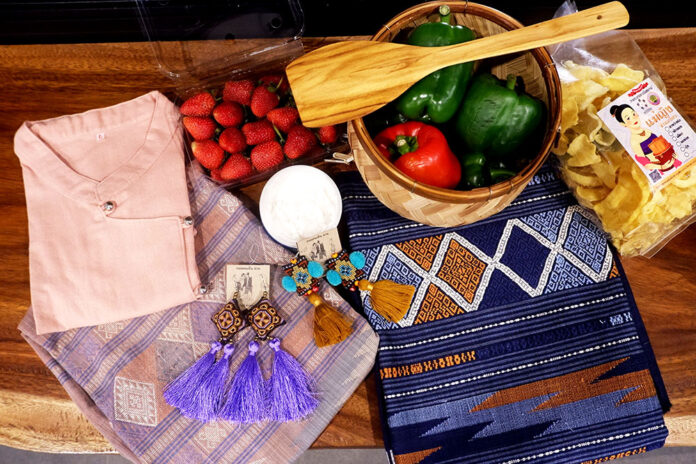
NAN — Although the quiet rural province isn’t known for being a shopping hub, here’s our guide to what to purchase in Nan to support local producers in a province listed as the 19th poorest in the country.
No sponsors here – all items were paid for by the writer.
Head down to the Nan Night Market next to Wat Phumin on Fridays and weekends where local shops will set up rows of snacks, clothes, and handicrafts starting at 5pm to about 6:30pm.
On repeated visits in January we purchased shockingly cheap produce: a bag of seven bell peppers for 35 baht and a box of strawberries for 100 baht. We even spotted a shop selling avocados for 60 baht per kilo.
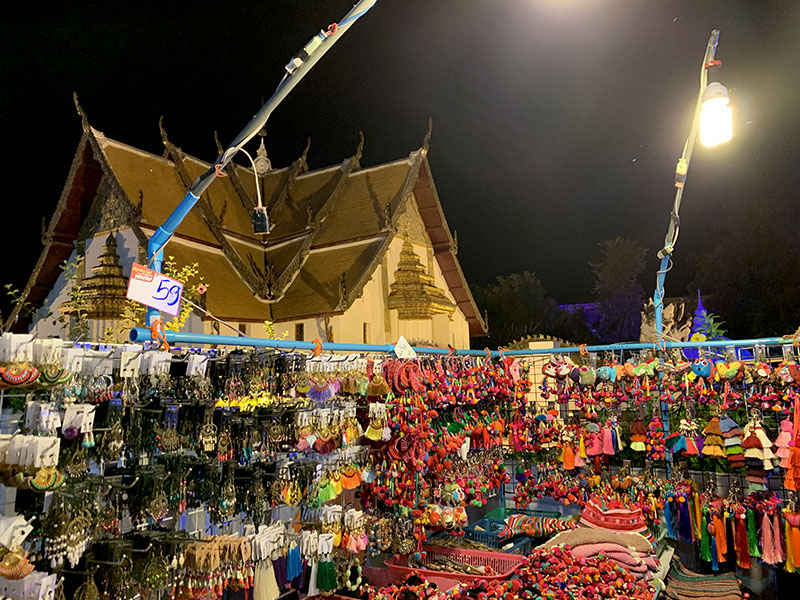
More ubiquitous were shops selling dyed or woven cloth and Northern Thai clothes. Prices were driven quite low due to the oversaturation, with a 2-yard piece of hand-embroidered Tai Lue patterned cloth sold for as low as 600 baht – although you may have to hunt for patterns that don’t use bright neon greens and fuschias.
The navy-and-brick cloth pictured above was purchased at the night market at an unnamed shop stall for 600 baht.
OTOP-like shops of woven clothes start to blur together until one runs into Kittiya Weaving, distinguishable for its cute pastel-colored tops and ready-made skirts.
Prices range in the thousand-up range for the skirts – more complicated weaving patterns such as the geometric one that depicts flowing water costs more, while tops are 250 baht. This pastel peach skirt pictured above cost 1,850 baht, but we were able to haggle.
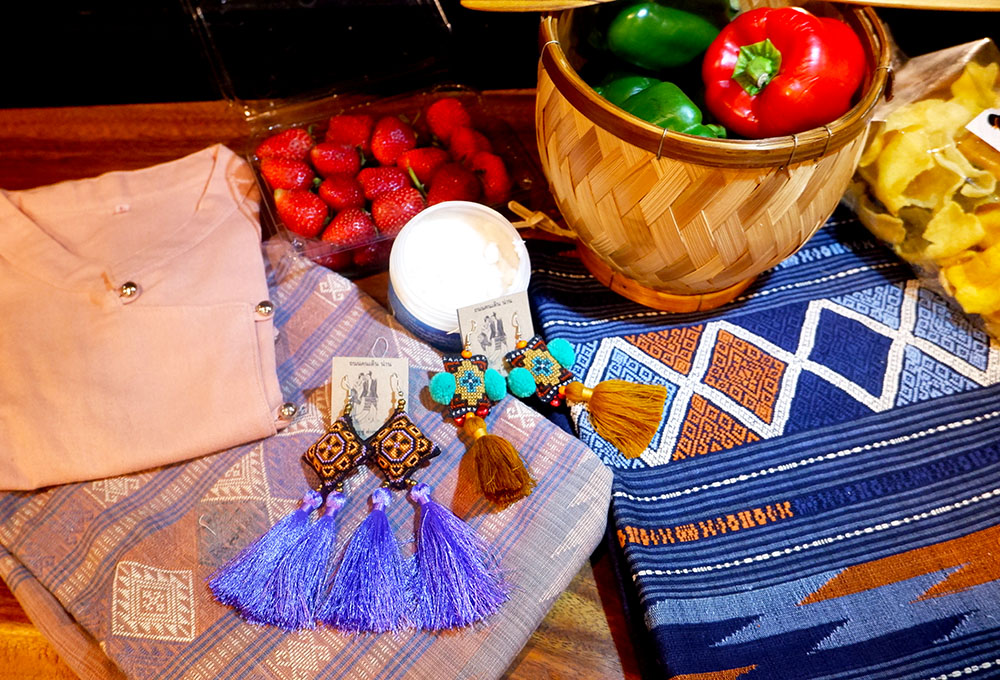
Give your look a Lanna flair with colorful tasseled earrings – despite the glut of tassel and pompom earrings, Chaba Nan’s shop stood out for their elaborate structures and embroidery. The pictured purple heart earrings cost 120 baht, while the ochre one cost 99 baht.
We also picked up a Punniga Salt Scrub (220 baht), an OTOP product from Bo Klua district, famous for its natural salt wells. One Tambon One Product, or OTOP, is a national program in which an exemplary product from each subdistrict, or tambon, is produced and sold.
One shop we hoped to see at the market but didn’t is the Pua Nopphakhaw OTOP brand that sells Tai Lue cloth and apparel, but with one of their collections redesigned to be more fashionable. But if not ordering online, one can only find their items at their shop 50 kilometers north of the town.
Wooden and woven handicrafts like spatulas and baskets are also available at the Mueang Chan Tambon [Subdistrict] Office, where we purchased the pictured spatula (40 baht) and woven basket (95 baht).
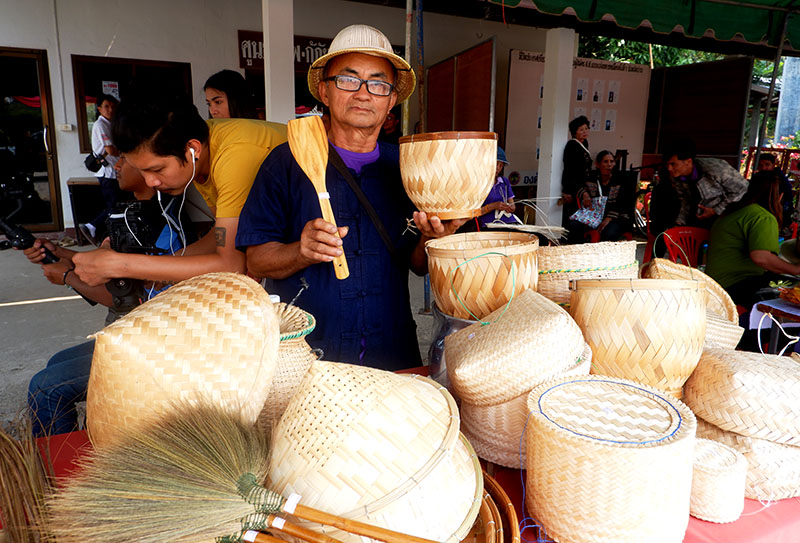
Manning the stall was Sing Supina, 66. He’s the head of the Loong Sing Baan Mueang Chan Moo 8 weaving club, which consists of 10 elderly people in his neighborhood.
For purchasing that basket, Sing said 90 baht goes to the weaver while 5 baht is kept by him for running the club. Loong Sing hawks his wares at local fairs and can be contacted at 089-561-6797.
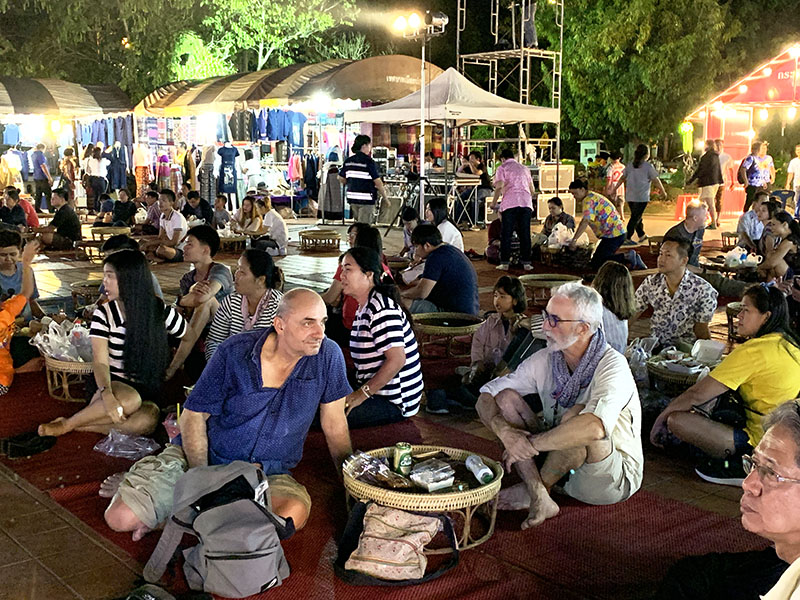
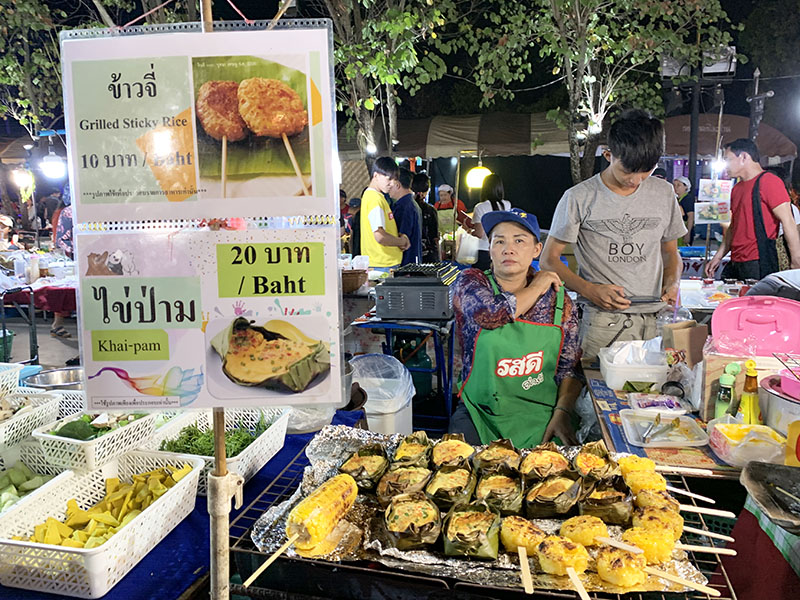
Related stories:
Shop For Thai Souvenirs That Aren’t Elephant Pants
Designers Take OTOP Products From Nope to Dope
Here’s 5 Green Tech That Could Help Lift Thai Farmers Out of Poverty
Makeup Makeover: Startups Changing Minds About Thai Cosmetics
Makeup Makeover: Startups Give Local Cosmetic Market a Refashioning














































